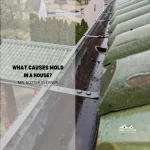Mold poses significant risks to home integrity and occupant health, necessitating effective remediation strategies.
This process involves not just removing visible mold but also addressing the underlying moisture issues that facilitate mold growth.
Homeowners seek reliable information on mold remediation to ensure their living spaces remain safe and mold-free.
Effective mold management includes identifying infestation areas, employing proper safety measures, and understanding removal techniques.
Additionally, preventative actions, such as humidity control and regular maintenance, play a crucial role in avoiding future mold problems.
Engaging with professionals for severe cases ensures thorough cleanup and safeguards against potential health hazards.
This comprehensive approach empowers homeowners with the knowledge and tools to tackle mold issues, contributing to the overall goal of maintaining a healthy, mold-free home environment.
What is Mold Remediation?
Mold remediation involves a detailed process aimed at removing mold and preventing its recurrence, ensuring a safe living environment. This process is essential because mold can undermine the structural integrity of a home and pose health risks to its occupants.
Why is Mold a Problem in Homes?
Mold thrives in damp conditions, often resulting from water intrusion or high humidity levels. It can cause significant damage to building materials and personal belongings. More critically, mold exposure is linked to respiratory issues and allergic reactions, making it a serious concern for homeowners.
How Does Mold Remediation Work?
The remediation process starts with an assessment to identify the extent of mold growth. It then moves to containment to prevent the spread of mold spores during cleanup. Professional remediation teams use specialized equipment and techniques to remove mold and its sources, followed by restoration of the affected areas.
Step 1: Identifying Mold in Your Home
Recognizing the presence of mold is the first step towards addressing the problem effectively.
Where Does Mold Commonly Grow?
Mold typically grows in areas with excessive moisture, such as basements, bathrooms, and kitchens. Poor ventilation and leaks can also create ideal conditions for mold proliferation.
Signs You Have a Mold Problem
Visible mold growth, musty odors, and health symptoms such as coughing or irritation of the eyes and skin are indicative of a mold issue. Discoloration of walls or ceilings and peeling wallpaper can also signal mold presence.
Step 2: Preparing for Remediation
Proper preparation is crucial for the successful remediation of mold, emphasizing safety and efficiency throughout the process.
Safety Measures for Mold Remediation
Safety protocols are paramount to protect both the remediation team and the home’s occupants. Utilizing personal protective equipment (PPE), such as masks, gloves, and goggles, is mandatory.
Ensuring adequate ventilation and sealing off the work area to prevent the spread of mold spores safeguards the home environment.
Choosing the Right Mold Remediation Professionals
Selecting a qualified mold remediation service is essential. Homeowners should look for professionals with certifications and a solid track record of successfully handling mold issues.
Requesting references and comparing quotes helps in making an informed decision.
Step 3: Mold Containment
Containment is critical to prevent mold from spreading during the remediation process.
Techniques for Containing Mold
Professional remediation teams use various containment methods, including physical barriers and negative air pressure systems. These techniques isolate the affected area, keeping mold spores from migrating to other parts of the home.
Preventing Mold Spread During Remediation
In addition to containment, proper handling and disposal of contaminated materials are vital. HEPA vacuums and air scrubbers are employed to capture airborne mold spores, further minimizing the risk of spread.
Step 4: Mold Removal Methods
The removal of mold is a critical phase, employing various techniques to ensure the complete eradication of mold and restoration of a healthy home environment.
Chemical Treatments for Mold Removal
Chemical solutions, including EPA-approved fungicides, play a crucial role in killing mold spores. These treatments are applied carefully to affected areas after containment, effectively neutralizing mold growth without harming the surrounding environment.
Physical Mold Removal Techniques
Physical removal involves scrubbing and vacuuming mold from surfaces. HEPA vacuums are particularly effective as they capture even the smallest mold spores, preventing them from re-entering the air. Contaminated materials that cannot be cleaned, like some portions of drywall or insulation, are safely removed and disposed of.
Disposal of Mold-Infested Materials
Proper disposal is essential to prevent the spread of mold to other areas. Materials that are heavily infested and cannot be salvaged are sealed in plastic bags and removed from the property, following local regulations for mold-contaminated waste.
Step 5: Preventing Future Mold Growth
Prevention is key to ensuring that mold does not become a recurring problem in the home.
Humidity and Moisture Control in Your Home
Maintaining low humidity levels (ideally between 30% and 50%) and addressing moisture sources are fundamental strategies. This can involve the use of dehumidifiers, proper ventilation in areas like bathrooms and kitchens, and prompt repairs of leaks.
Regular Home Maintenance to Prevent Mold
Regular inspections and maintenance of the home’s exterior and interior can prevent conditions conducive to mold growth. This includes cleaning gutters, ensuring downspouts direct water away from the foundation, and checking for any water accumulation in basements or crawl spaces.
When to Consult Mold Remediation Experts
For persistent or large-scale mold issues, consulting with mold remediation experts is advisable. Professionals can offer more advanced solutions and preventative measures to ensure the home remains mold-free.
Conclusion: Maintaining a Mold-Free Home
Ensuring a mold-free home extends beyond remediation; it requires ongoing diligence and preventative measures.
The Importance of Regular Inspections
Regular inspections are critical in identifying potential mold issues before they escalate. Homeowners should inspect their homes for signs of moisture accumulation, water damage, and visible mold growth, particularly in prone areas like basements, bathrooms, and attics. Early detection allows for prompt action, reducing the risk and extent of mold infestation.
Key Takeaways for Homeowners
Maintaining a mold-free home necessitates a multifaceted approach: controlling indoor humidity levels, ensuring proper ventilation, fixing leaks promptly, and conducting routine maintenance checks. Homeowners should also consider professional inspections, especially after incidents that could lead to water intrusion. Awareness and proactive measures are indispensable in preventing mold growth, safeguarding both the structural integrity of the home and the health of its occupants.


